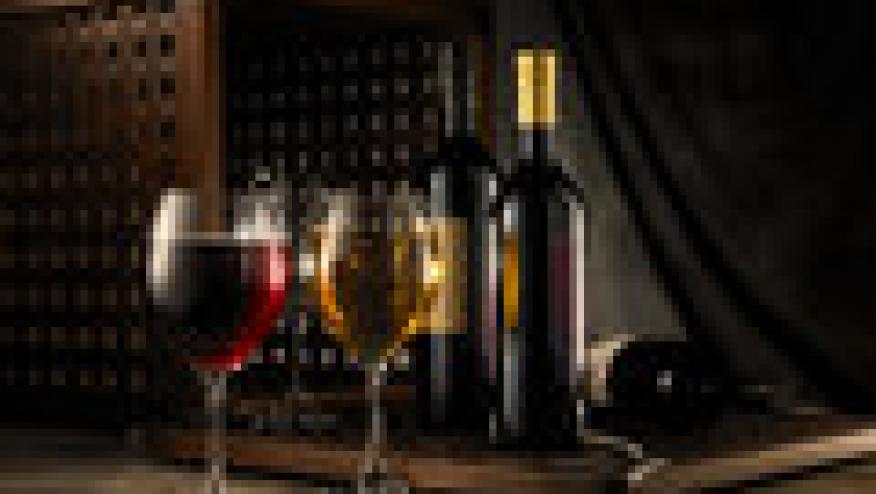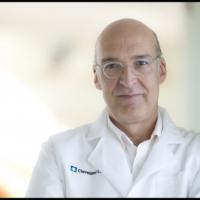Food and Wine and the Rheumatologist: The Microbiome and Natural Wine Save

OK, allow me to digress a bit. I have been blogging on wine and food for the rheumatology community (and those for those who are like minded) for 2 years now and I have largely avoided science, favoring a more humanistic slant on wine and food.
Today, I deviate in a provocative and hopefully exciting way, by fusing the rheumatologist’s forthright interest in the microbiome with our abiding interest in all things wine. So, what gives?

“Do I contradict myself? Very well, then I contradict myself, I am large, I contain multitudes”
~Walt Whitman
As rheumatologists, we now find ourselves in the vortex of the new science of the microbiome as it appears to be critical to the pathogenesis of many of our diseases. This is fortunate because I can skip the Microbiome 101 as would be required for a lay audience- right? Just in case we are in need of remedial orientation, recall that we have learned new terms (i.e. microbiome, metagenome etc.) and have hopefully acquired a new way of thinking about the community of microorganisms (bacteria, archea, viruses, fungi and meiofaunal) that permeate or bodies.
Pioneering work by the likes of Jose Scher and colleagues have clearly demonstrated that dysbiosis ( perturbations of our indigenous microbial partners) contributes in some complex way to the predisposition and clinical expressions of many of our diseases We also now appreciate that our microbial co-travelers, who cover and line every surface of our body, are absolutely essential for not only the development and deployment of our immune system, but also for the proper function of our brains, endocrine and metabolic systems as well virtually every other biologic function we can think about. Hopefully, in this new light we are coming to view our microbial co-travelers not as invaders or even as friends but more as, the gifted science writer Ed Yong has recently described, interconnected, interdependent multitudes.
Before I speak of wine, I will proffer one more term to ponder and that is ‘holobiont’. The concept of the holobiont, while several decades old, is now resurgent and is based on the recognition that that humans, animals and plants and for that matter all things living are not autonomous but rather complex networks consisting of the host and all attendant microbes. Their collective genes are the ‘hologenome’ and support a notion that all of us animals and plants are communities.
Beyond these networks are super communities where we interact with each other in a cloud like fashion where every single action of one group has an effect on the other. I know this is sounding off track, but I hope to make the case in this blog that vineyards and wine makers and wine drinkers are super communities and this should shape our view of wine making and wine drinking.
Now, onto wine and the microbiome. One of the most irritating and complex terms in the enologic lexicon is ‘terroir’. Consulting the altar of Wikipedia, I am told that terroir is “the complete natural environment in which a particular wine is produced, including factors such as the soil, topography, and climate”. While I get this concept (sort of), being a scientific guy I have long asked - what is this really? Please give me some data so I can get my head around it. I am here to declare that I am increasingly convinced that plant microbiomes contribute largely to the phenomenon.
This concept is not exactly new in wine science and my quick systematic review of the topic reveals a growing literature on the subject. The field has even attracted world class microbiome researcher’s including the University of Chicago’s Jack Gilbert, who has demonstrated that vines and their soil have distinct microbiomic signatures. In a quote from the University of Chicago website Gilbert says, “Different areas of the plant have different microbiomes, but in nearly all cases, the microbiome originates with the soil,” … “Everyone latches onto terroir because that’s the most interesting thing about vines, but there’s a much larger story here with regards to the role the soil plays in the development of the productivity, disease tolerance and stress tolerance of the plant itself.” If there is a strong case that terroir is driven by microbiomic forces then what does that tell us about making wine?
Consider winemaking now a gradient of production where the modern standard is highly mechanized, ultra-sleek and clean production, often utilizing exogenous fungi to kick start fermentation.
Wine and the Rheumatologist View of the Continuum of Wine:
Making with Respect for the Microbiome
Modern wine making ----- Organic Wine Production ----- Biodynamic wine production ----- Natural Wines
Modern winemaking, in an effort to achieve international style (a common term which implies a directed effort to make say a pinot taste like a pinot), may be attended by manipulations such as adding sugars, acids and finning agents to help achieve such. We all know the picture of the iconic Napa winery that looks like it was designed by Frank Gehry with vineyards immaculately tended. The wineries themselves often appear more like cathedrals than farms.
I urge you all to visit the new Antinori facility in Tuscany for this version of modern wine making. To me, it was a unique experience but totally surreal as it made me feel as if I was on a Star Trek movie set rather than a working place for wine production. It is not that this modern wine making fails to tend to the microbiome but it feels like it is more based on science than tradition, trusting the mind of man more than nature. There is now at least one company dedicated to analyzing microbiomic optimization in agriculture which includes wine production MicroTrek Inc -Tracking microbes in space and time). Go figure!
Next, consider the notion of organic wine, which is basically wine made from grapes grown in accordance with principles of organic farming, which typically excludes the use of artificial chemical fertilizers, pesticides, fungicides and herbicides. From this perspective, it makes sense to me that organic farming principles have been a step in the direction of tending to the vineyard microbiome but wait, there is more to consider.
Moving toward the right, we come to biodynamic wines. In all honesty, I used to laugh at this concept. After all, it is nearly a century old and at its core it sounded like it was founded by an aging hippie (actually the Austrian philosopher Rudolph Steiner). While biodynamic wine production is somewhat hard to define, it seems to favor conservation and balance and while incorporating organic wine production principles it is often much more. In its purest form, it also incorporates practices such as burying a domesticated animal skull or horn filled with dung, flowers and what have you then spraying the composted product on the farm in the spring. Yes, it sounds bug nutty to me too but I now consider this practice as an effort to influence the hologenome of the vines and the people tending the vineyard are part of the supercommunity of the farm. As I am, and as Ed Keystone likes to say “frequently wrong but never in doubt”, I now see the underlying mechanism of action of this practice. Perhaps next time I will take up defending Lamarckian inheritance which in the era of the epigenome does not sound so crazy as well.
Finally, what about natural wines and perhaps cult wines as the asymptotic extreme of micrbiomically based wine making? While organic wine production and biodynamic wine production have codes, standards and certification bodies, no standards exist for natural wine production (though producers on several continents hold meetings to discuss common matters).
Natural wine makers seem more like mavericks to me, making wine out of what nature gives them with nothing more and nothing less. Their vineyards may seem comparatively unkempt with grass or other plants growing among the vines looking far different from the tailored Napa scene. They also may incorporate cult like practices such as planting, harvesting and producing their wines to coincide with phases of the moon. Hell, if a bull horn of cow dung and flowers works, who is to say that the lunar calendar is not just what the rheumatologist ordered.
I recently shared one of my favorite natural wines (Italian of course) with a notable group of rheumatologist during annual Mike Schweitz wine extravaganza at ACR 2016 (I will write my next blog on it if I can remember what we drank). The wine I brought was called Munjabel made by the iconoclastic producer Frank Cornelissen on the northern slope of My Etna in Sicily. While I never have visited his vineyard (I tried and was told no visitors allowed due to harvest activities when we were there last year and thus was heartbroken),
I first read of it in the wonderful book Palmento: A Sicilian Wine Odyssey by the noted wine writer Robert Comuto (A top Wine and the Rheumatologist book pic by the way). I have had many of his bottlings over the past several years and am only now just starting to understand his wines. As Mr. Cornelissen states on his website, they are “beyond organic and beyond biodynamic”. Not only are they not exposed to wood but they are fermented in clay amphoras. He says he is not an organic wine maker but rather he merely adds nothing to the process (save occasional sulphite to preserve production). He also proudly eschews all science in the development of wine preferring to commune with what nature offers. (As a result, I am going to go out on a limb and guess he doesn’t holds stock in Micro-Tek---but that’s just a guess). From my perspective, I have found his wines quite remarkable but be aware there are year to year and even lot to lot variations which while not often unfavorable, are unusual in modern wine making. Mr. Cornellisen is proud of this as he goes to every effort to stay out of the way of the natural production of wine.
Natural wines to me are alluring and just taste and look different ranging from their unfiltered appearance to their bouquet which at times may be associated with barn yard aromas (not bad ones please!). I am sorry but I am kind of hooked on them. Another natural wine maker from the Northern end of Italy is the iconic Josko Gravner who pioneered the use of amphora in modern wine making and also celebrates the use of the phases of the moon in his production (please visit his most wonderful website to feel the beauty of the process http://www.gravner.it/ ). I love his wines made from Ribolla as they epitomize the notion of orange wines in their appearance and taste.
Well now you have it. We can think about the microbiome by day when we see our patients with autoimmune diseases and then use that same knowledge to cultivate our appreciation for wine. Please go out and try some natural wines and share your stories with me. Cheers!
@LCalabreseDO
For further reading
- On natural wines: The Italian Wine Makers Cult by Danielle Pergament Oct 30, 2016 New York Times
- On microbiomics of wine: Zarraonaidia I, et. al. The soil microbiome influences grapevine-associated microbiota mBio March 24, 2015
- Wine and the Rheumatologist Book Pick:
For a SUPER READ on the microbiome, the hologenome and beyond, please read
I am Multitudes by Ed Yong – One of the best reads of the year!











If you are a health practitioner, you may Login/Register to comment.
Due to the nature of these comment forums, only health practitioners are allowed to comment at this time.